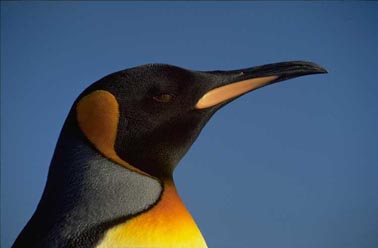|
The effort to protect our wildlife gathered momentum as a result of decisions made in Manila last week at the 12th session of the Conference of the parties to the CMS.
The CMS is the Convention on the Conservation of the Migratory Species of Wild Animals. You can find out more about it here and there's a list of countries who are involved here.
This week, it reported that 1,000 delegates representing the world governments attending the year’s largest wildlife summit had collectively endorsed actions on the conservation of a variety of migratory species.
CMS provides a global platform for the conservation and sustainable use of migratory animals and their habitats. It brings the States together through which these animals pass, and it lays the legal foundation for internationally co-ordinated conservation measures. This is an environmental treaty under the aegis of the UN Environment Programme.
The conference took place in Manila in the Philippines from 23 to 28 October. The theme was “Their Future is our Future – Sustainable Development for Wildlife and People.”
Asia, Africa, the Americas, Europe and Oceania made submissions covering species such as vulture, the endangered Whale Shark, and Africa’s great carnivores.
The week of negotiations have resulted to a stronger commitment by countries to conserve the world’s migratory wildlife. The Convention which took place in Manila has a compliance review mechanism now, and it has adopted species that test the boundaries of international wildlife conservation.
There were also agreements to work together to reduce the negative impacts on migratory species of
- marine debris
- noise pollution
- renewable energy
- climate change
“The Conference has also contributed to a growing global recognition of the importance of nature to our human well-being and the multiple connections between wildlife and people. It has helped to convey the message that the future of migratory wildlife is integral to our own future and that we all have the responsibility to act. Agreements made at CMS COP12 have firmly underlined this important message,” said Bradnee Chambers, Executive Secretary of CMS.
Director Theresa Mundita Lim of the Biodiversity Management Bureau said, “Migratory animals play a critical role in our planet’s ecosystem. They act as pollinators, control pests and are a source of food and income.”
Notable outcomes of COP12 included more protection for:
- Three species of shark and three species of ray
- Avian species such as the Steppe Eagle, four species of Asian Vulture, 5 Sub-Saharan Vulture Species, the Lappet-faced Vultlure and the Christmas Frigatebird, a subspecies of the Black Noddy, the Yellow Bunding and the Lesser and Great Grey Shrike
- The Giraffe – less than 90,000 giraffes remain in the wild in Africa
- The Leopard and the Lion, paving the way for a joint initiative on protecting Africa’s great carnivores
- The chimpanzee who is facing a 50% drop in numbers over 3 generations and fast habitat loss
- The near extinct Gobi-Bear – only 45 of the subspecies of the brown bear remain in the wild in Mongolia and China
- The Caspian Seal, the only marine mammal found in the world’s largest inland sea
- The Africa Wild Ass, Przewalski’s Horse and 4 species of Lasiurus bat
In all 12 mammals were given greater protection under CMS, 16 birds and 6 species of fish.
Other outcomes of COP12:
- Consensus on a new inter-governmental task force to curb the illegal killing of birds crossing the east-Asian-Australasian Flyway – that spans 22 countries
- A conservation roadmap for the African Wild Ass (there are just 70 left in the wild)
- A Vulture Multi-Species Action plan to better protect 15 species of Old World Vulture in over 120 countries
- CMS Guidelines on assessment impacts of marine noise activities
- Expanding the Convention’s work on preventing the poisoning of birds with a special focus on the effects of led
- Action on aquatic wild meat which is becoming a conservation problem on a scale similar to terrestrial bushmeat
Awards were also given in recognition of outstanding commitment and long term conservation efforts to the Environment Agency of Abu Dhabi, the EU, Germany, Monaco and the government of the Philippines.
Ms Lim said: We will put in place the necessary national measure to integrate the conservation and protection of migratory wildlife species into our development planning processes and we will engage all sectors of society in crafting these measures.
We can protect only those species within our territory. Beyond our territory, we urge other countries to also initiate measures to protect these species and to join the Convention.”
Find out more here |
